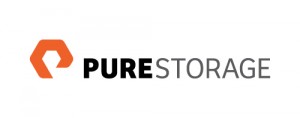The past year has brought momentous political change, transition and innovation, for people and governments across the country. Though the news would suggest that 2017 has been a year of fragmentation and turmoil, it was also full of devoted public servants at the local, state and federal level thinking outside of the box and creating impactful change.
This month’s DorobekINSIDER Live, titled “Innovations That Matter: Automation, Blockchain, IoT and More,” reflected on how government has adopted and taken advantage of new technologies. Christopher Dorobek spoke with the following experts to discuss how agencies can stay at the leading edge of innovation into 2018:
- Catherine Andrews, Senior Director of Editorial and Production at GovLoop
- Kirit Amin, Chief Information Officer at the U.S. International Trade Commission (ITC)
- Mallory Barg Bulman, Vice President of Research and Evaluation at the Partnership for Public Service (PPS)
- Robert Shea, Principal at Grant Thornton LLP
According to Barg Bulman, one biggest factors that mattered in 2017 was workforce transition. “As of right now, only 208 of 620 key positions in federal government have been filled. These positions require presidential nominations and Senate confirmations, but the process has been much slower than we’ve ever seen before. This hinders the ability of government to carry out its mission,” she explained.
“The Trump administration has launched a number of ambitious initiatives — regulatory reform, government-wide reorganization, tax reform and major budget reductions,” said Shea. “All of those things take political leadership to accomplish, so they’re less successful than they might have been. We just don’t have players on the field to carry the ball to the goal line.”
Interestingly, even with so many political vacancies and absences at the top, the federal workforce has seen improvement in the area of employee engagement. “Based on survey data collected by PPS, it’s clear that feds profoundly care about the work of their agency. This year’s employee-skills mission match score — measuring the extent to which a government employee feels that he or she can make a difference at work — went up by one point,” said Barg Bulman. “Further, the leadership scores employees gave to their direct supervisors went up significantly, suggesting that day-to-day work is a positive, mission-driven experience for many feds.”
Providing a positive environment for employees, especially in periods of transition, can even have implications for the success of IT modernization initiatives. “It’s important to remember that people are a part of the modernization process. Technology cannot be done without employees,” said Amin. “As we modernize and move to the cloud, there are some job positions that may no longer be required, and new ones that will be totally different in terms of how they carry out mission from the inside. Thinking about your IT workforce and how it will change over the next few years has to be part and parcel of the modernization process.”
Though innovation is necessary for agencies to continue to deliver on their missions, it is often difficult for new technologies to take hold in government. Amin noted, for example, that transitioning to the cloud was once seen as impossible and that deployment of FedRAMP was a slow, drawn-out process.
One challenge to modernization is a changing workforce, with hiring freezes, shortages of skilled and experienced IT staff and the coming “retirement tsunami.” Another is a lack of financial resources due to budget austerity — a problem especially pronounced for small and independent agencies).
“It’s going to be a long time before government is doing ‘more with more’ — instead, it’s going to have to ‘do more with less,’” said Barg Bulman. “But instead of acting in freefall, we need to be approaching strategic workforce planning: how can government agencies act as one enterprise and leverage each other’s strengths? We have to realize that we’re not in a position for each agency to do everything by itself.”
Despite the high costs of IT modernization and innovation, agencies have to think in the long term. “Technologies like blockchain could help overcome major accounting difficulties in tracking and recording government transactions. If you compare what it would cost to implement blockchain, you have to recognize that there are efficiency gains to be had even if adoption is difficult,” said Shea. “The same is true of artificial intelligence and machine learning. These are technologies that can expand and innovate the way we serve our citizens and will bring enormous productivity gains for agencies.”
But making a case for the effectiveness of new technologies and their application to the public sector can be challenging. Shea provided the analogy of driverless cars and the reticence to adopt this technology. Every crash or instance of death or injury seems to make the front page. But in looking at the data, this is an irrational fear because the number of regular car accidents far outnumbers the chances of crashing in a driverless vehicle.
“If history is a guide, there will be a substantial lag in adoption of these technologies in government behind the private sector,” said Shea. But it is increasingly clear that the cost of not taking advantage of technological advances is too much to ignore.
“Government needs to realize that there are so many better ways to do our work,” said Barg Bulman. “This will require change and relinquishing some control, but we are frankly in a position where we don’t have a choice. We have to consider these options, or keep falling behind.” Amin similarly explained that agencies need to look at modernization as a necessary investment, rather than a cost.
It seems that the government has started to catch on, passing down modernization mandates and tech-focused initiatives like the 2017 Modernizing Government Technology (MGT) Act, which will hopefully provide funds to accelerate IT modernization and adoption of new technologies.
Looking ahead, Amin, Barg Bulman and Shea predict that 2018 will be a year of successful transition and smarter, data-driven decisions in policymaking. “2018 is going to be the year of information and usable, shareable data across government,” said Barg Bulman. “We’re moving in the right direction. All the building blocks are there, we just need to put our best foot forward.”
Read GovLoop’s recent guide, The Top 30 Government Innovations of 2017, here.






Leave a Reply
You must be logged in to post a comment.